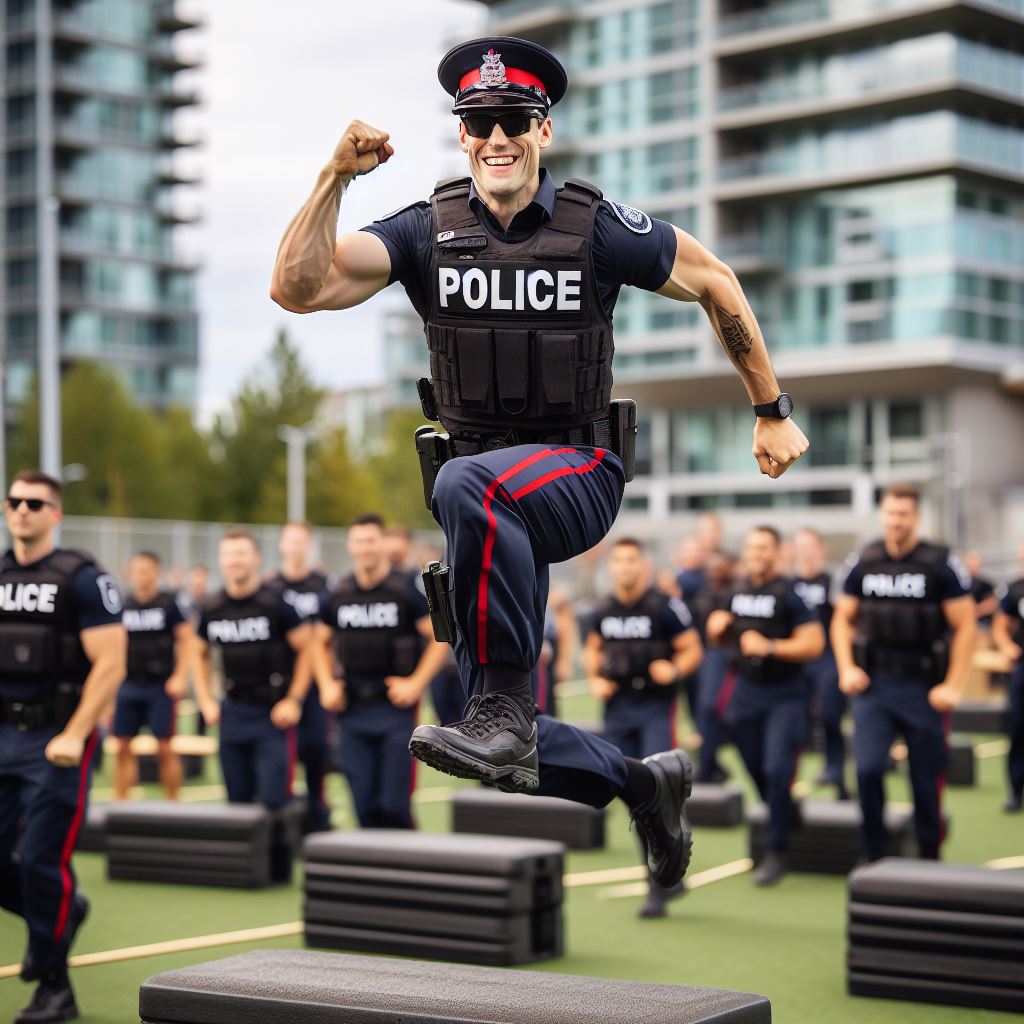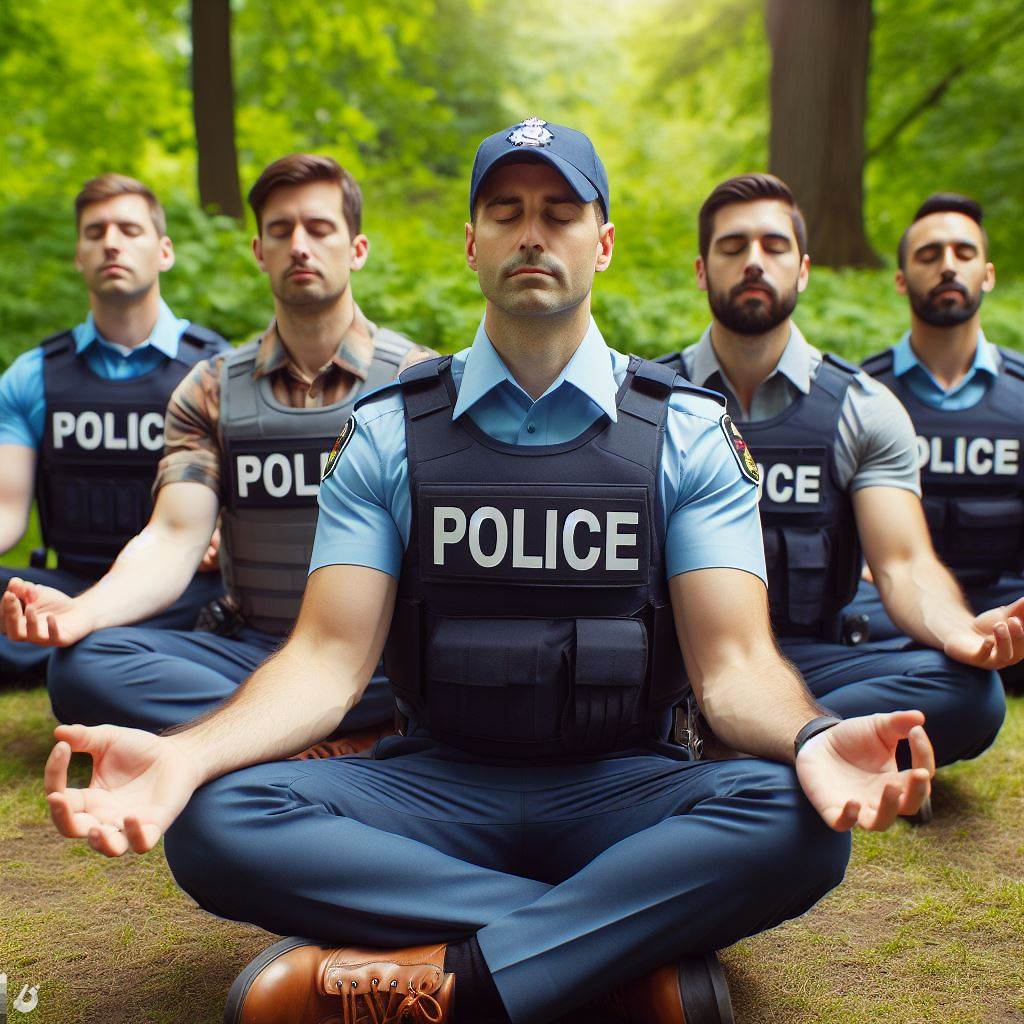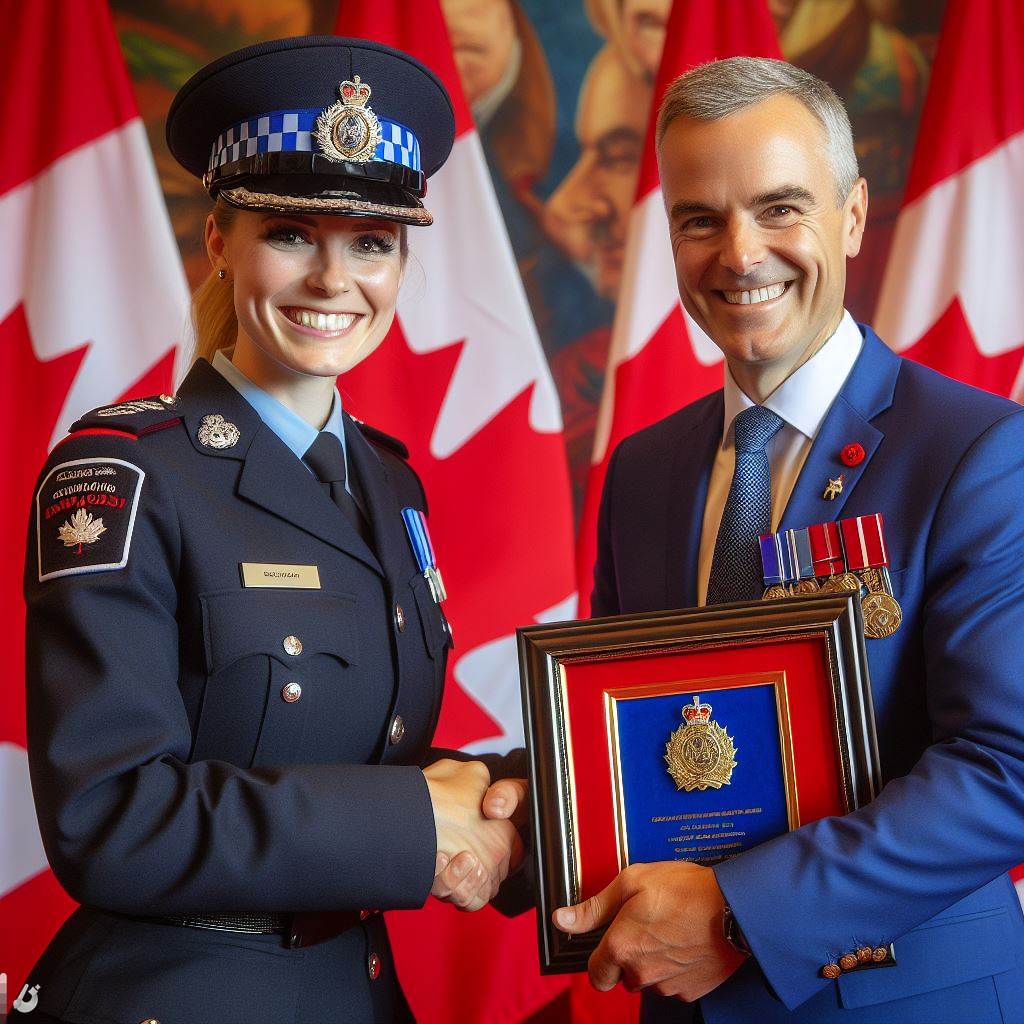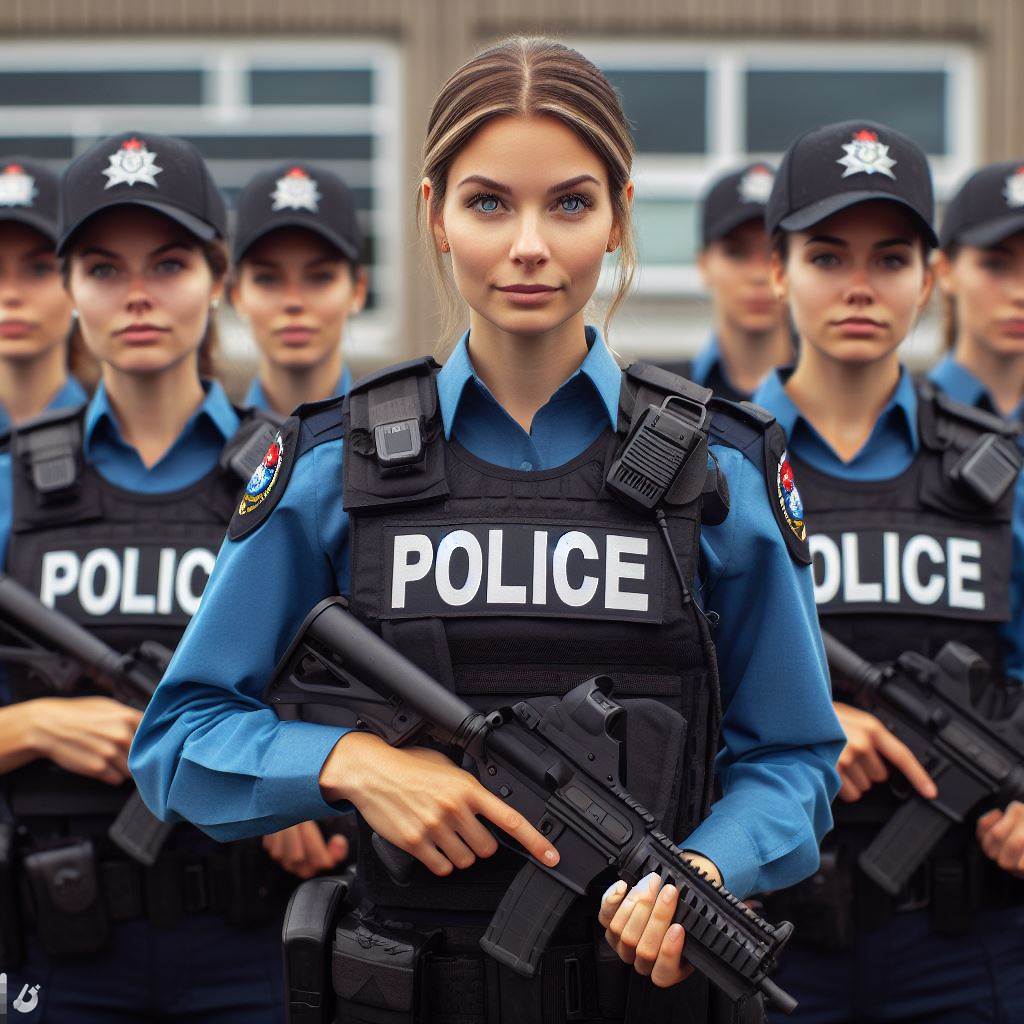Introduction
A brief overview of the topic
Fitness standards for Canadian police officers are essential for ensuring their ability to perform their duties effectively and safely.
These standards establish minimum physical requirements that officers must meet to be capable of handling the physical demands of the job.
Importance of fitness standards for police officers
Having fitness standards for police officers is crucial for several reasons.
Firstly, physical fitness is vital for officers to carry out their daily tasks, which often involve physically demanding activities.
Secondly, being fit helps prevent injuries and reduce the risk of accidents while on duty.
Additionally, fitness standards contribute to the overall health and well-being of police officers, promoting a healthy lifestyle and preventing chronic diseases.
By establishing fitness standards, police departments can ensure that officers are prepared for the challenges they may face in the line of duty.
These standards also help in the recruitment and selection process, ensuring that candidates can meet the physical demands of the job.
Moreover, ongoing fitness assessments contribute to officers’ motivation to maintain their physical fitness throughout their careers.
In essence, fitness standards are vital for Canadian police officers to effectively carry out their duties, prevent injuries, and promote a healthy lifestyle.
These standards are necessary for the recruitment process and ongoing assessments, ensuring that officers can meet the physical demands of their jobs.
By prioritizing fitness, police departments can have a force that is physically able, reducing the risks and enhancing overall effectiveness.
Current fitness requirements for Canadian police officers
In order to maintain law and order in society, it is essential for police officers in Canada to possess the necessary physical fitness to carry out their duties effectively.
The current fitness standards for Canadian police officers are designed to ensure that they meet the physical demands of their job, as well as to promote their overall health and well-being.
Explanation of the current standards and tests
The current standards and tests for Canadian police officers are based on a combination of physical abilities and overall health.
The Canadian Police Knowledge Network (CPKN) collaborates with police agencies nationwide to establish and implement these standards.
Regular reviews and updates ensure these standards align with the evolving needs of the profession.
Police officers must demonstrate key physical abilities, including cardiovascular endurance, muscular strength and endurance, flexibility, and explosive power.
These abilities are assessed through a series of standardized tests, which are administered at various stages of the recruitment process.
Criteria based on physical abilities and overall health
Physical abilities play a crucial role in the performance of police officers’ duties, such as chasing and apprehending suspects, handling physical altercations, and responding to emergencies.
Therefore, it is important for officers to meet certain criteria to ensure that they possess the necessary physical capabilities.
In addition to physical abilities, overall health is also taken into consideration.
Police officers are required to maintain a healthy body weight, as obesity can hinder their physical performance and increase the risk of developing chronic diseases.
They are also expected to have good vision, hearing, and mental health, as these factors contribute to their overall effectiveness on the job.
Fitness tests conducted during the recruitment process
The fitness tests conducted during the recruitment process are designed to assess the physical abilities and overall health of potential police officers.
Unlock Your Career Potential
Visualize a clear path to success with our tailored Career Consulting service. Personalized insights in just 1-3 days.
Get StartedThese tests vary across different police agencies in Canada but generally include components such as running, push-ups, sit-ups, and flexibility exercises.
For example, the Royal Canadian Mounted Police (RCMP) requires applicants to pass the PARE (Physical Abilities Requirement Evaluation) test.
This test involves completing a series of tasks within a specific time frame, including climbing stairs, dragging a 165-pound mannequin, running, and other physical challenges.
Similarly, the Ontario Provincial Police (OPP) conducts the PREP (Physical Readiness Evaluation for Police) test, which assesses cardiovascular endurance, muscular endurance, and overall fitness through activities like running, push-ups, sit-ups, and a 300-meter shuttle run.
These fitness tests are rigorous and demanding, ensuring that only individuals who meet the required standards are selected to become police officers in Canada.
Successful completion of these tests demonstrates that candidates have the physical capabilities necessary to perform the duties of a police officer effectively.
In short, the current fitness requirements for Canadian police officers are based on a combination of physical abilities and overall health.
These requirements are regularly reviewed and updated to ensure that police officers are physically capable and healthy enough to carry out their duties.
The fitness tests conducted during the recruitment process play a crucial role in assessing the suitability of candidates and selecting individuals who meet the required standards.
Read: Digital Diplomacy: Canada’s Approach
Benefits of maintaining high fitness standards
Improved job performance
- Officers who maintain high fitness standards are more capable of performing their duties effectively.
- Physical fitness enables officers to respond quickly and efficiently to emergency situations.
- Strength and stamina enhance an officer’s ability to engage in physical pursuits, such as chase and apprehend suspects.
- Being physically fit allows officers to stay alert and focused throughout their shifts.
- Officers who are fit are more likely to fulfill their responsibilities and meet their performance standards.
Enhanced safety for officers and the public
- Physically fit officers are better equipped to handle dangerous situations, reducing the risk of injury.
- Strong fitness levels improve an officer’s ability to defend themselves and protect others.
- Being in good shape reduces the likelihood of accidents or mistakes caused by fatigue.
- Fit officers can quickly react to threats, ensuring the safety of both themselves and the public.
- Improving physical fitness standards can result in a decrease in on-duty injuries.
Positive impact on mental health and stress management
- Maintaining high fitness standards contributes to improved mental well-being among police officers.
- Regular exercise releases endorphins, which can alleviate stress and improve mood.
- Physical activity assists in reducing symptoms of anxiety and depression.
- Being physically fit can help officers cope with the psychological challenges of the job.
- Exercise provides a healthy outlet for stress and can improve sleep quality.
Overall, maintaining high fitness standards for Canadian police officers brings numerous benefits.
It enhances job performance, ensuring officers can effectively carry out their duties and respond to emergencies.
It also promotes safety for both officers and the public, reducing the risk of injuries and enabling quick reactions to threats.
Furthermore, maintaining high fitness standards positively impacts mental health, providing stress relief and aiding in better psychological well-being.
Investing in the fitness of police officers is crucial for creating a strong and capable law enforcement force.
Read: Languages for Diplomats: What to Learn
Learn More: Volunteer Firefighting in Rural Canada
Criticisms and challenges of fitness standards
Controversies regarding discrimination and fairness
- Lack of consideration for individual differences in body type and genetics:
Fitness standards may prioritize certain body types, discriminating against officers who don’t fit the mold. - Unfair impact on female officers due to physiological differences:
Biased fitness tests may make it challenging for qualified female officers to meet the standards tailored towards male physiology. - Potential for age discrimination in fitness requirements:
Older officers may find it challenging to maintain the same level of physical fitness as younger counterparts, leading to potential discrimination.
Accessibility and inclusivity considerations
- Lack of accommodations for officers with disabilities:
Fitness standards may fail to consider disabilities, limiting opportunities for individuals capable of performing essential functions. - Financial barriers to accessing necessary resources:
Some officers may struggle to afford memberships to gyms or purchase fitness equipment, hindering their ability to meet the standards. - Inadequate training and support to help officers meet the required fitness levels:
Without proper resources and guidance, some officers may face challenges in improving their fitness, leading to inequity.
Proper implementation and consistent enforcement
- Variations in implementation across different police departments:
Inconsistent enforcement and potential unfairness may occur due to the non-uniform application of fitness standards. - Lack of periodic reevaluation of fitness standards:
Regularly reevaluate standards to ensure they remain relevant and address the ongoing demands of policing effectively. - Limited consequences for noncompliance:
Without stringent consequences for failing to meet fitness standards, officers may lack motivation to maintain required levels of fitness.
In fact, fitness standards for Canadian police officers have faced criticisms and challenges in various aspects.
Address discrimination, fairness, and individual differences controversies.
Consider accessibility and inclusivity to provide opportunities for officers with disabilities or financial constraints.
Proper implementation and consistent enforcement are crucial to prevent variations and maintain fairness across different police departments.
Regular reevaluation of fitness standards and potential consequences for noncompliance would further strengthen the effectiveness of these standards.
Addressing criticisms and challenges allows Canadian police forces to reach a consensus on inclusive, fair, and effective fitness standards.
Read: Career Paths: Beyond the Diplomat Role

Proposed updates and improvements to fitness standards
Achieving and maintaining a high level of fitness is crucial for police officers to effectively perform their duties.
As society evolves, so should the fitness standards for Canadian police officers.
In this section, we will explore proposed updates and improvements to these standards.
Research and expert opinions on increasing the requirements
Regularly evaluate and update fitness standards to ensure police officers are physically equipped for their demanding job.
Research and expert opinions play a vital role in this process.
- Conduct comprehensive research: In order to determine the effectiveness of current fitness standards, thorough research should be conducted. This research should analyze the physical demands of police work and compare it to the existing fitness requirements.
- Seek input from fitness experts: Consulting with fitness experts, such as physiologists and trainers, can provide valuable insights into the specific physical skills and abilities required for police work. Their expertise can aid in determining appropriate fitness standards.
- Evaluate international standards: It is important to look at fitness standards in other countries, especially those with successful law enforcement agencies, to identify any gaps or areas for improvement in the current Canadian standards.
Suggestions for a more comprehensive approach
In order to enhance the overall fitness levels of Canadian police officers, a comprehensive approach to fitness standards is necessary.
This involves considering various aspects and implementing improvements accordingly.
- Implement regular fitness assessments: Regularly assess officers’ physical fitness to ensure they meet established standards. This will promote accountability and motivate officers to maintain their fitness levels.
- Include functional fitness training: Incorporating functional fitness training that mimics real-life situations encountered by police officers will better prepare them for the challenges they may face in their line of duty.
- Emphasize cardiovascular endurance: Given the cardiovascular demands of police work, placing a strong emphasis on improving and maintaining cardiovascular endurance is essential. Officers should engage in activities such as running, cycling, and swimming to enhance their cardiovascular fitness.
- Strengthen core and functional strength: Developing core and functional strength is crucial for police officers, as they often need to perform physically demanding tasks. Including exercises that target these areas, such as planks and functional movements, can help improve overall performance.
Addressing the concerns raised by critics
While proposing updates and improvements to fitness standards, it is important to address the concerns raised by critics to ensure the fairness and effectiveness of these standards.
- Avoid discrimination: The revised fitness standards should be designed in a way that does not discriminate against individuals based on gender, age, or physical ability. The focus should be on job-related capabilities and not arbitrary requirements.
- Provide sufficient training resources: In order to meet the revised standards, police officers should be provided with adequate resources and support. This includes access to fitness facilities, equipment, and training programs tailored to their specific needs.
- Regularly review and update: Fitness standards should be a subject of ongoing evaluation and improvement. Regular reviews and updates based on scientific research and feedback from officers can help ensure that the standards keep pace with changing demands.
As the role of Canadian police officers continues to evolve, so too should their fitness standards.
By incorporating research, expert opinions, and comprehensive approaches, we can ensure that our police officers are physically capable of fulfilling their duties effectively and safely.
Read: Cultural Sensitivity in Diplomacy: Tips
Conclusion
Recap of the importance of fitness standards for police officers
Physical fitness is crucial for police officers to perform their duties effectively and ensure public safety.
It enables them to handle physically demanding tasks, chase suspects, and protect themselves and others.
By setting fitness standards, Canadian police forces prioritize the well-being of officers and the communities they serve.
These standards ensure that individuals with the necessary physical abilities are recruited and retained in law enforcement.
Call to action for maintaining high standards
It is essential for police departments to continually assess and update fitness standards to keep up with evolving demands.
Maintaining high fitness standards promotes professionalism and upholds the integrity of the police force.
Regular fitness testing and training should be implemented to ensure officers are capable of handling any situation.
Final thoughts on the topic
Physical fitness is not just about appearance; it directly impacts police officers’ ability to serve and protect.
Prioritizing fitness standards for police officers creates a strong and capable law enforcement force.
By maintaining high fitness standards, Canadian police officers are better equipped to face the challenges of their profession.
Ultimately, the well-being of officers and the communities they serve depends on these rigorous fitness requirements.




